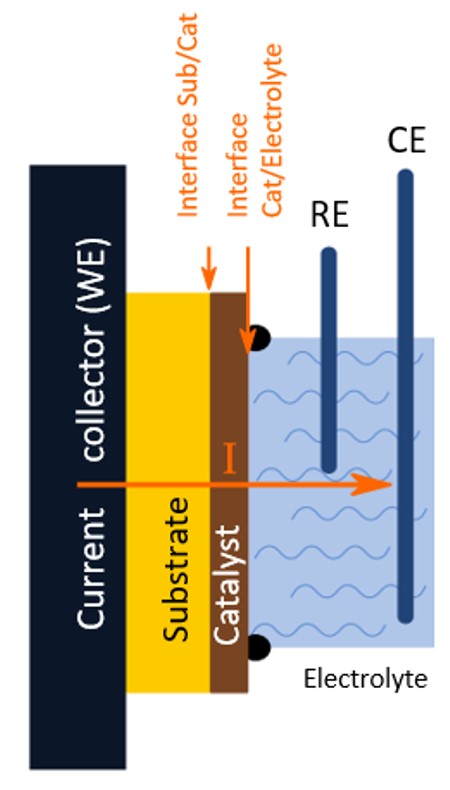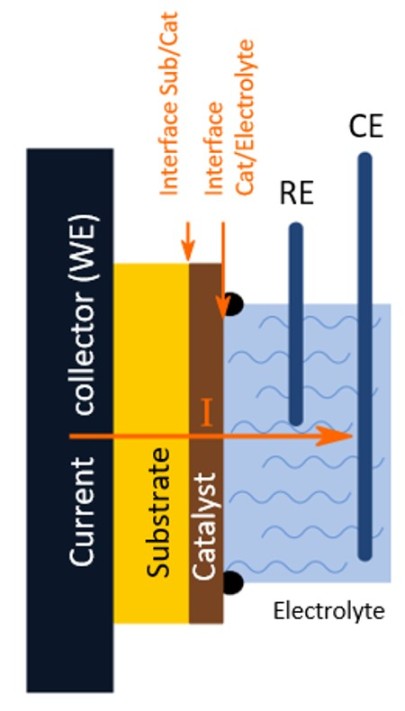BMBF H2Giga PrometH2eus
Characterization and design of inner and outer interfaces in O2-evolving electrodes for alkaline water splitting
2021/01/01

The BMBF is currently funding the flagship project H2Giga, which aims at bringing innovative and more efficient electrolysers into series production. Within that project, the PrometH2eus consortium combines fundamental and applied science to synthesize, evaluate and optimize new materials for the oxygen evolution reaction in alkaline electrolysis.
In the Surface Science Laboratory at TU Darmstadt, we analyse the energetics, structure, and chemistry of the inner and outer interfaces of Ni based electrodes. The catalyst support interface needs to support an optimal charge transfer for an increased activity and stability of the electrode. At the catalyst electrolyte interface the coupling of OER intermediates to catalytically active sites is governed by the electronic structure and how the charge transfer between electrolyte and catalyst species is facilitated.
With a combination of XPS, UPS, XAS, UV Vis, (in situ) Raman spectroscopy, and (in situ) FTIR spectroscopy, both well defined model catalysts and electrodes operated under (near) industrial conditions are investigated.
H2Giga Project



